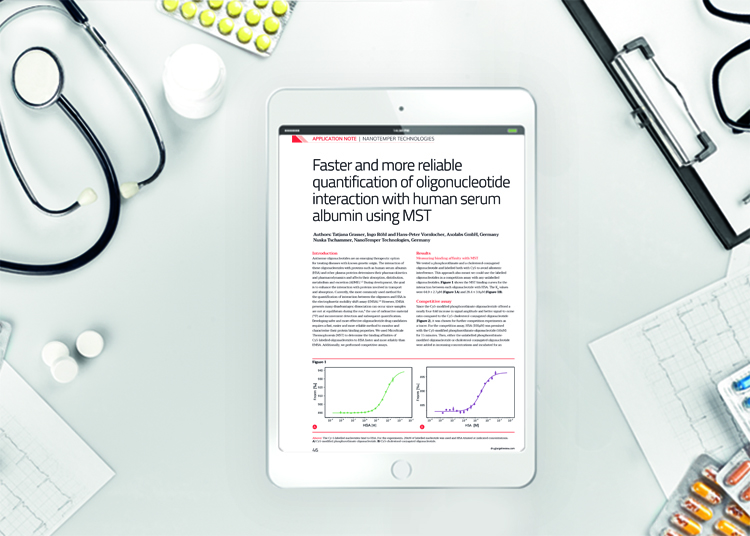Application note: Faster and more reliable quantification of oligonucleotide interaction with human serum albumin using MST
Posted: 13 September 2019 | NanoTemper Technologies | No comments yet
Antisense oligonucleotides are an emerging therapeutic option for treating diseases with known genetic origin.
The interaction of these oligonucleotides with proteins such as human serum albumin (HSA) and other plasma proteins determines their pharmacokinetics and pharmacodynamics and affects their absorption, distribution, metabolism and excretion (ADME). During development, the goal is to enhance the interaction with proteins involved in transport and absorption.
Currently, the most commonly used method for the quantification of interaction between the oligomers and HSA is the electrophoretic mobility shift assay (EMSA). However, EMSA presents many disadvantages: dissociation can occur since samples are not at equilibrium during the run, the use of radioactive material (32P) and inconvenient detection and subsequent quantification.
Developing safer and more effective oligonucleotide drug candidates requires a fast, easier and more reliable method to monitor and characterise their protein binding properties.
Related content from this organisation
- Video: Dianthus for identifying Microcycle® hits
- Guide: Screening biologic candidates with nanoDSF
- Infographic: Biologics stability in early development
- Video: Four integrated technologies for biologics developability assessment
- Brochure: Overcome roadblocks in your PROTAC characterizations with Dianthus
Related topics
Analytical Techniques, Assays, DNA, Ligands, Protein, Research & Development, Screening
Related organisations
NanoTemper Technologies









